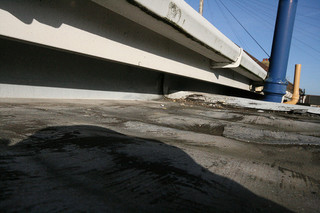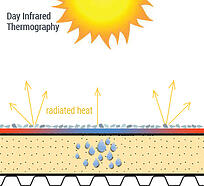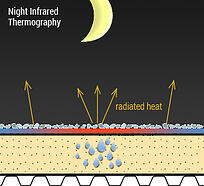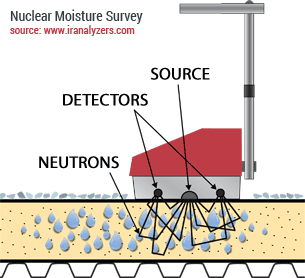5 Steps to Know When to Replace a Roof
 Here is your situation. You suspect your facilities roof is nearing the end of its serviceable life, maybe it's pooling,cracking, or starting to leak in some areas, how do you determine when to replace a roof or to restore it? To find the answer, a thorough investigation of the current condition of the roof must be done. Here is a five step process you can use to determine if your roof is eligible for replacement or restoration and which option is the better choice.
Here is your situation. You suspect your facilities roof is nearing the end of its serviceable life, maybe it's pooling,cracking, or starting to leak in some areas, how do you determine when to replace a roof or to restore it? To find the answer, a thorough investigation of the current condition of the roof must be done. Here is a five step process you can use to determine if your roof is eligible for replacement or restoration and which option is the better choice.
1. Scan each roof section using infrared thermography or nuclear neutron moderation (Non-Destructive Testing). Infrared thermography measures the level of heat radiating from a surface and is best used with roofing systems that are sensitive to heat radiation. The best time to test using thermography is near dawn or dusk when differences between wet and dry areas will be the greatest. Defer to nuclear neutron moderation (nuclear moisture survey) when the roofs surface has minimal sensitivity to heat radiation. Nuclear moisture surveys use an isotopic source to emit neurons. It detects possible water intrusions by measuring the emitted neurons speed which is reduced when they collide with hydrogen neutrons. These surveys are best done by paid contractors every two years or so.
 |
 |
 |
2. If water intrusion is detected, confirm the survey results by taking test cut "cookie" samples from the roof (Destructive Testing). This step involves cutting out a sample of the roof that is suspect for water intrusion. The tool for this job is a roof core cutter which bores a hole, removing a circular cutout of the roof to analyze for moisture. Send the sample out for gravimetric testing to get an accurate moisture percentage. It is best to enter any initial findings into your maintenance management system along with a photo of the roof layers if possible. Here is a video demonstrating the process.
3. Visually inspect other parts of the roof for potential damage or leaks. While thermography and nuclear surveying will determine if leaks are present, they will not reveal the cause. Leaks can come from more than just deteriorated roofing, equipment may no longer be sealed allowing water to infiltrate the interior roof deck. Check the following problem areas for the source of a leak:
- Areas where equipment penetrate the roof deck
- Roof membrane for tears and holes caused by debris, foot traffic, or maintenance activities
- Drains and gutters for clogs or damage
- Expansion joints and flashing for damage or leaks
Here is a video of a typical visual inspection of a flat, single ply roof.
4. Review your warranties to see who is liable for repairs/replacement. Before thinking your organization will have to foot the bill for repairs, roof damages may be covered by material manufacturers or your roof contractor warranties. The catch here is they will want proof of regular maintenance as specified in the warranty. This is another reason to always document completed maintenance tasks. Facility maintenance management software like Que Centre will make this process easy, allowing you to quickly print a maintenance activity log for your roof. If regular preventive maintenance was not performed, you can almost guarantee your organization will be paying out of pocket.
5. Determine the repair type needed to bring the roof back to a maintainable level. When water intrusion is evident and is isolated to a few areas, a roof restoration is in order. A roof replacement is usually only necessary when water intrusion is severe and scattered across the entire roof. When faced with a split decision here are a few things to think about:
- Which option will be the least disruptive to normal operations? (usually restorations)
- Which option will take the least amount of time? (usually restorations)
- Which option will offer the better long term investment? (usually replacement)
- Which option will create the greatest benefit for the cost? (could go either way)
Here is an easy cost vs. benefit calculation to determine which option will be the most economical when you're gathering quotes.

Note: The reason roof replacement takes into account maintenance costs is because it is considered a capital expense where a restoration is considered a maintenance cost associated with a current serviceable asset.
Here are some other helpful articles:
How to Start a Preventive Maintenance Program From Scratch
Preventive Maintenance Checklist Worksheet - Free Download
10 Ways Facility Managers Can Improve the Quality of Work Environments
Ryan Noble
Ryan is Q Ware's Marketing Specialist.